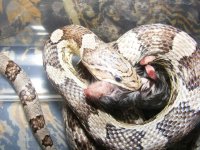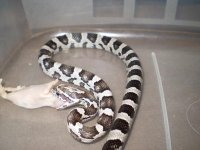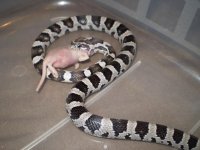Kurogamii
New member
What is this morph called?

Also, is this the same morph? If not what is it called?

I'm really liking the black and white morphs, the original oranges and red aren't my thing. I was also wondering if this morph would be way more expensive than a traditional corn.
Thanks much, I'm still working on getting money together, so hopefully you'll see my snake soon :3

Also, is this the same morph? If not what is it called?

I'm really liking the black and white morphs, the original oranges and red aren't my thing. I was also wondering if this morph would be way more expensive than a traditional corn.
Thanks much, I'm still working on getting money together, so hopefully you'll see my snake soon :3




